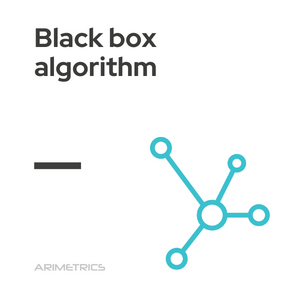
Definition:
In the technical field, a black box is when a system is viewed primarily by its input and output characteristics. A black box algorithm
is one where the user cannot see the inner workings of the algorithm.
It is a rather controversial system, due to the secrecy they contain and the lack of transparency, although its creators defend it as a security and privacy system to avoid data leaks and unfair competition.
Another characteristic of this type of algorithms is their dynamism; they tend to constantly present changes in order to adapt to the growing pace of technology and offer value to their users.
Examples of black box algorithms
- Google: the best known and most studied example of the black box algorithm is the algorithm that governs Google searches. It is known that there are certain factors that influence web positioning,but no one outside of Google knows exactly all the parameters that influence the ranking of a web page, nor the percentage of weighting of these parameters. Google is the undisputed engine that governs the main activities on the web, so understanding part of its operation is an additional advantage over the competition.
- Instagram: undoubtedly the algorithm that is most talked about today, with permission from Google, is that of the popular social network of photography and that determines the publications that are shown to its users, the order and frequency of them.
- Netflix: a trend that has become very popular in recent years is that of those algorithms that collect our behavior, interpret it and transform it into personal recommendations, the case of the platform of movies and series, in those that may interest us more based on tastes.
Advantages and disadvantages of black box algorithms
The advantages and disadvantages of this type of algorithm include the following:
Advantages:
- Security and Privacy: By hiding their internal processes, these algorithms make it difficult for malicious users to manipulate them, providing an additional level of security. This is especially important in applications where data protection is critical, such as banking or personal information management.
- Adaptability: Black box algorithms can be regularly updated to keep up with technological advances and new market trends. This flexibility allows companies to respond quickly to changes in the digital environment, maintaining their relevance and competitiveness.
- User Simplicity: Users can benefit from these algorithms without the need to understand their inner workings, facilitating the user experience. This allows companies to offer complex solutions in an accessible way, improving customer satisfaction and engagement.
Disadvantages:
- Lack of Transparency: The opacity of these algorithms can generate distrust among users, who do not know how decisions are made. This lack of clarity can lead to concerns about fairness and justice, especially if algorithmic decisions affect important aspects of people’s lives.
- Difficulty for Auditing: The impossibility of accessing internal details makes it difficult to audit and critically analyze these algorithms. This can be a challenge for organizations that must comply with transparency and accountability regulations, as well as making it difficult to identify and correct errors or biases.
- Data Dependency: If the data used are biased or incomplete, the algorithms may produce inaccurate results, affecting the quality of the decisions based on them. This dependence can lead to erroneous decisions that perpetuate existing biases or do not adequately reflect reality.
Ethical considerations in the use of black-box algorithms
The use of black box algorithms raises important ethical considerations. Lack of transparency can lead to algorithmic decisions that significantly affect users without their understanding why. There is a risk that inherent biases in training data will be perpetuated, affecting fairness and justice in outcomes.
Organizations should consider implementing measures to ensure accountability and fairness, such as external audits and disclosure of general criteria used in decision making. In addition, it is crucial to maintain an open dialogue about the impact of these algorithms on society and work to mitigate any negative effects.
